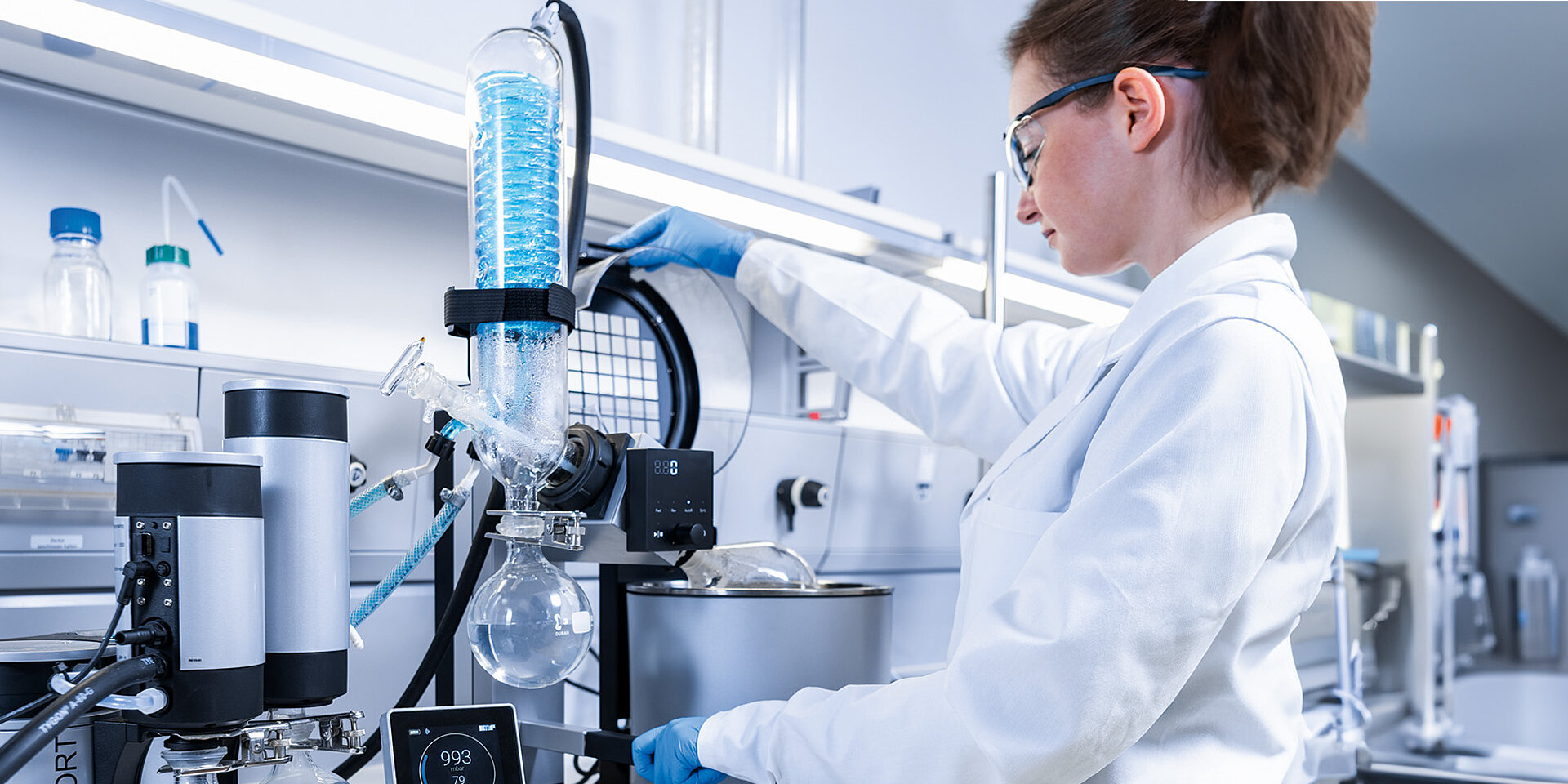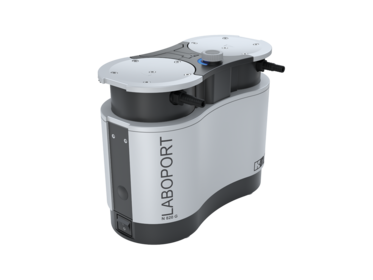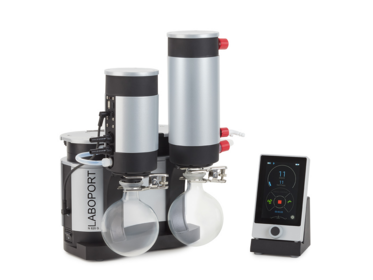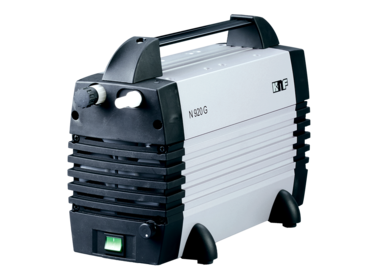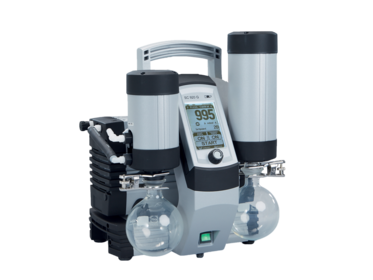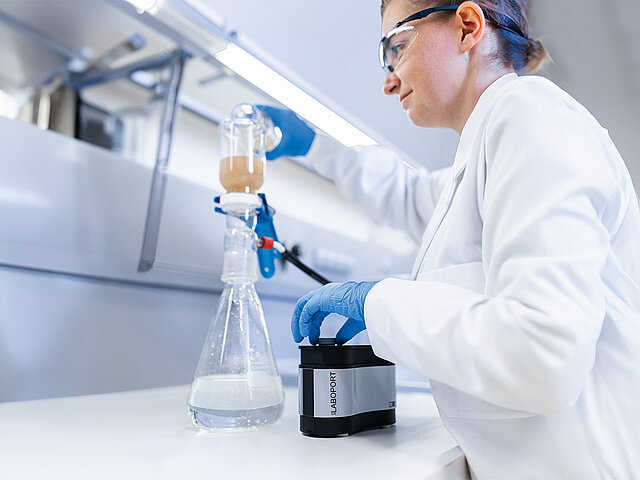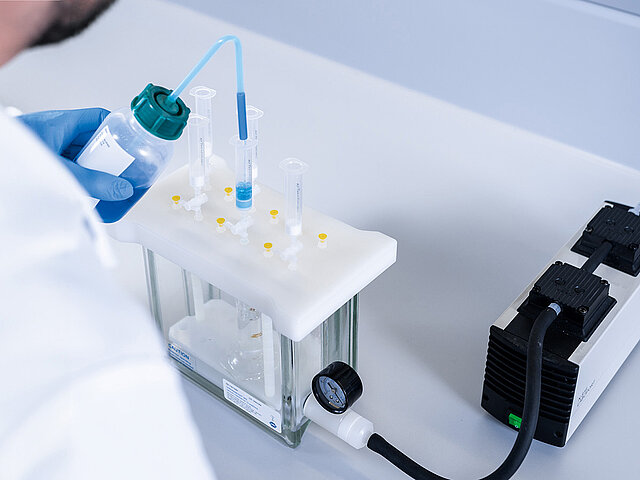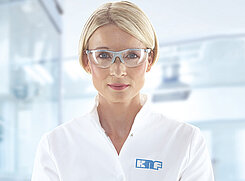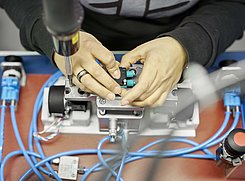KNF Pumps and Systems for Rotary Evaporation and Distillation Processes
The wide range of KNF high-performance laboratory pumps and systems is designed to meet the most demanding requirements. Find the right solution for your application and increase your efficiency.
Understanding the Distillation Process
Separating liquids through distillation processes can be challenging when dealing with compounds that have a high boiling point at atmospheric pressure, as the high temperature required for distillation can have a negative thermal effect on the compound. In such cases, vacuum distillation is the preferred method.
The distillation process is typically performed using laboratory vacuum distillation equipment and an appropriate vacuum pump. The choice of pump is determined by several factors, including the desired vacuum depth, the total system volume, and the desired temperature during the distillation. The system temperature in combination with the boiling point of the solvents will determine the desired vacuum depth. The total system volume will help determine the optimal pump flow rate, with larger volumes requiring a higher flow rate.
Delving Into Rotary Evaporation
Rotary evaporation is based on the principle that by increasing the surface area of a sample and optimizing the temperature and vacuum level, a solvent can be effectively separated in a very short time. Additional cooling condensers, either using dry ice or recirculation, allow the separated solvent to be recovered.
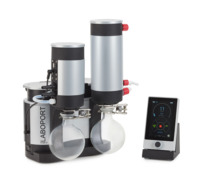
Factors to Consider When Selecting the Ideal Pump for Rotary Evaporation and Distillation Processes
- Ultimate depth of vacuum depending on the solvents
- Oil-free operation and chemical resistance
- High vapour and condensate compatibility
- Flow rate proportional to system volume
- Solvent recovery capabilities at both inlet (separator) and outlet (high-performance condenser)
- Adjustable vacuum level control (remote control available for additional safety)

